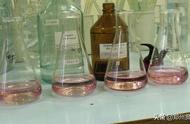
ReaxFF反应力场方法极大地扩展了反应分子动力学模拟在各种材料性质和过程中的适用性。其参数一般都经过了大量的训练,以适用于一组预定义的量子力学数据,但在应用于复杂化学反应时,仍然无法准确地描述好我们感兴趣的量。
来自美国南加利福尼亚大学的中野爱一郎教授领导的团队,使用了一种基于反应分子动力学(RMD)模拟的算法来训练反应力场参数和对模拟量进行了不确定性的量化。ReaxFF参数的训练是通过直接拟合反应分子动力学轨迹与量子分子动力学轨迹的动力学过程来进行的,在这个过程中,多个感兴趣量的Pareto最优前沿为不确定度的量化提供了一系列ReaxFF模型。他们以化学气相沉积MoS2单层的合成为例,对量子分子动力学(QMD)模拟进行了力场参数的训练。从一个128原子MoO3-H2S系统出发,通过估算在QMD模拟过程中H-S、Mo-O和Mo-S键的数量作为时间的函数来研究反应动力学。通过与RMD模拟结果的比较,他们发现RMD可以在误差范围内定量地再现QMD。
该文近期发表于npj Computational Materials 4: 42 (2018) ,英文标题与摘要如下,点击https://www.nature.com/articles/s41524-018-0098-3自由获取论文PDF。

Multiobjective genetic training and uncertainty quantification of reactive force fields
Ankit Mishra, Sungwook Hong, Pankaj Rajak, Chunyang Sheng, Ken-ichi Nomura, Rajiv K. Kalia, Aiichiro Nakano & Priya Vashishta
The ReaxFF reactive force-field approach has significantly extended theapplicability of reactive molecular dynamics simulations to a wide range ofmaterial properties and processes.ReaxFF parametersare commonly trained to fit a predefined set of quantum-mechanical data, but itremains uncertain how accurately the quantities of interest are described whenapplied to complex chemical reactions. Here, we present a dynamic approachbased on multiobjective genetic algorithm for the training of ReaxFF parametersand uncertainty quantification of simulated quantities of interest. ReaxFFparameters are trained by directly fitting reactive molecular dynamicstrajectories against quantum molecular dynamics trajectories ReaxFF on the fly, where the Pareto optimal front for the multiple quantities ofinterest provides an ensemble of ReaxFF models for uncertainty quantification. Ourin situ multiobjective genetic algorithm workflow achieves scalability byeliminating the file I/O bottleneck using interprocess communications. The insitu multiobjective genetic algorithm workflow has been applied tohigh-temperature sulfidation of MoO3 by H2Sprecursor, which is an essential reaction step for chemical vapor depositionsynthesis of MoS2 layers. Our work suggests a new reactive moleculardynamics simulation approach for far-from-equilibrium chemical processes, whichquantitatively reproduces quantum molecular dynamics simulations whileproviding error bars.
















